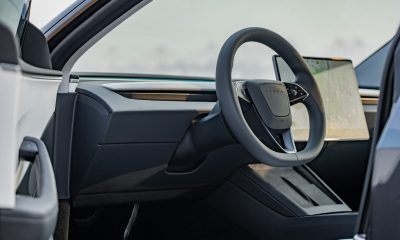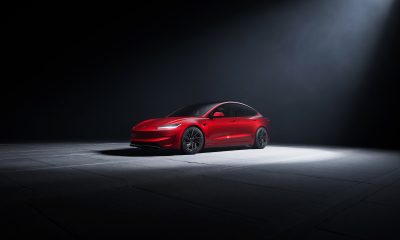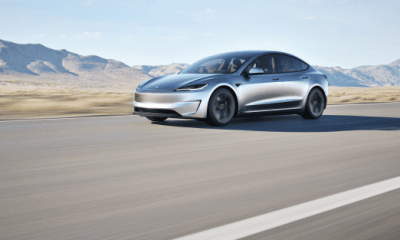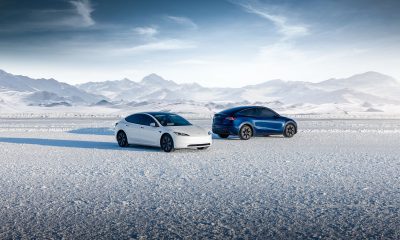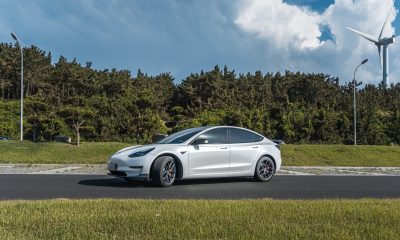News
Tesla readies for Model 3 production in July, initial crash test results “positive”
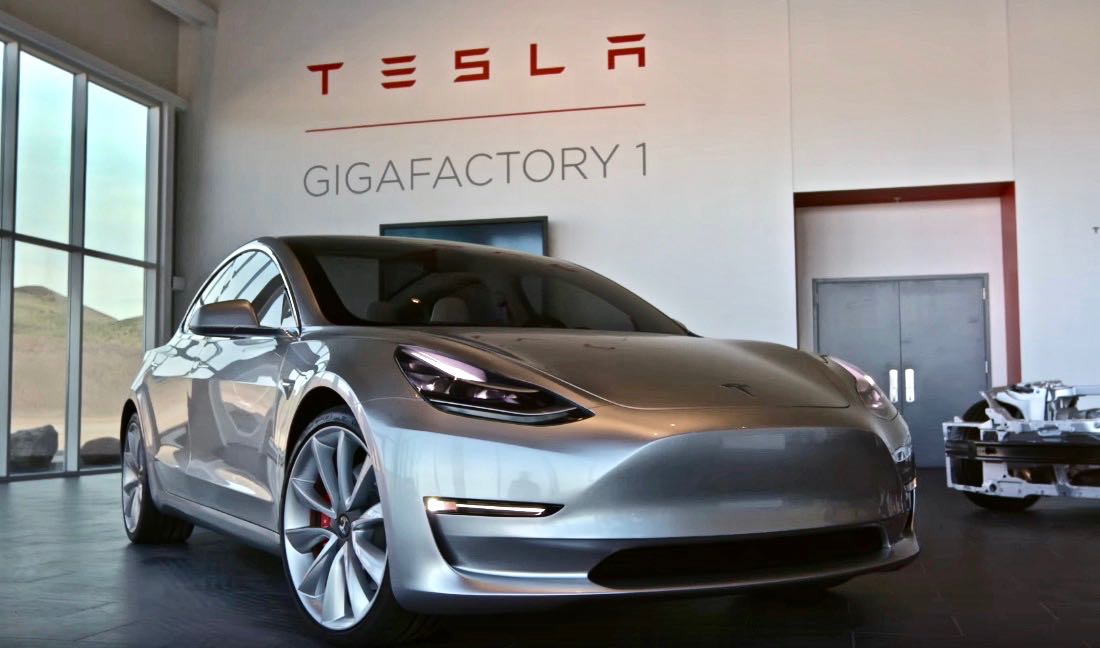
Tesla’s much anticipated Model 3 will begin to see production beginning in July, before ramping to volume production by September. The announcement was made Wednesday when Tesla reported its Fourth Quarter and Full Year 2016 update letter, during which the company revealed that Model 3 production was “on track” for July.
The news comes on the heels of recent announcements that Tesla’s factory in Fremont, California had temporarily shut down operations in preparation for Model 3 retooling.
Tesla CEO Elon Musk fielded a variety of questions around the Model 3 in today’s Q&A call, during which he further reaffirmed the company’s position that Model 3 will see volume production of roughly 5,000 vehicles per week sometime in the fourth quarter. Tesla expects to ramp Model 3 production to 10,000 vehicles per week in 2018.
Tesla Advanced Automation Germany formed through the acquisition of Grohmann Engineering last year will be responsible for building manufacturing processes that will be initially used for Model 3 production.
Today’s earnings report also confirms earlier rumors that Tesla would begin test builds of Model 3 prototypes this month. First Model 3 prototypes were built this month as part of the company’s effort to assess manufacturing processes. Tesla indicates that vehicle development, supply chain and manufacturing have been primed for volume deliveries later this year.
“In early February, we began building Model 3 prototypes as part of our ongoing testing of the vehicle design and manufacturing processes.”
The company also revealed in its earnings report that initial crash test results for the Model 3 prototypes were “positive, leading the company to move forward on its planned July production timeframe.
“Initial crash test results have been positive, and all Model 3-related sourcing is on plan to support the start of production in July. Installation of Model 3 manufacturing equipment is underway in Fremont and at Gigafactory 1, where in January, we began production of battery cells for energy storage products, which have the same form-factor as the cells that will be used in Model 3.”
The Model 3 will utilize Tesla’s latest 2170 high performance lithium ion battery cell that’s produced in conjunction with strategic partner Panasonic at the Gigafactory. As indicated in the letter to investors, Model 3 will share the same battery cells currently being produced for the company’s Powerwall and Powerpack energy storage products. Model 3 battery pack production is scheduled to begin in the second quarter.
News
Tesla exec reveals shock development with Cybercab
“If we have to have a steering wheel, it can have a steering wheel and pedals.”

Tesla is planning to launch the Cybercab in the second quarter of next year, and it is designed to be fully autonomous, so much so that the company is planning to build it without a steering wheel or pedals.
However, a Tesla executive said today that the company could ditch that idea altogether in what would be a major shift from the plans the company, and especially its CEO Elon Musk, have announced for the Cybercab.
Earlier today, Robyn Denholm, the company’s Chair for the Board of Directors, revealed that Tesla would potentially switch up its plans for the Cybercab based on potential regulatory requirements.
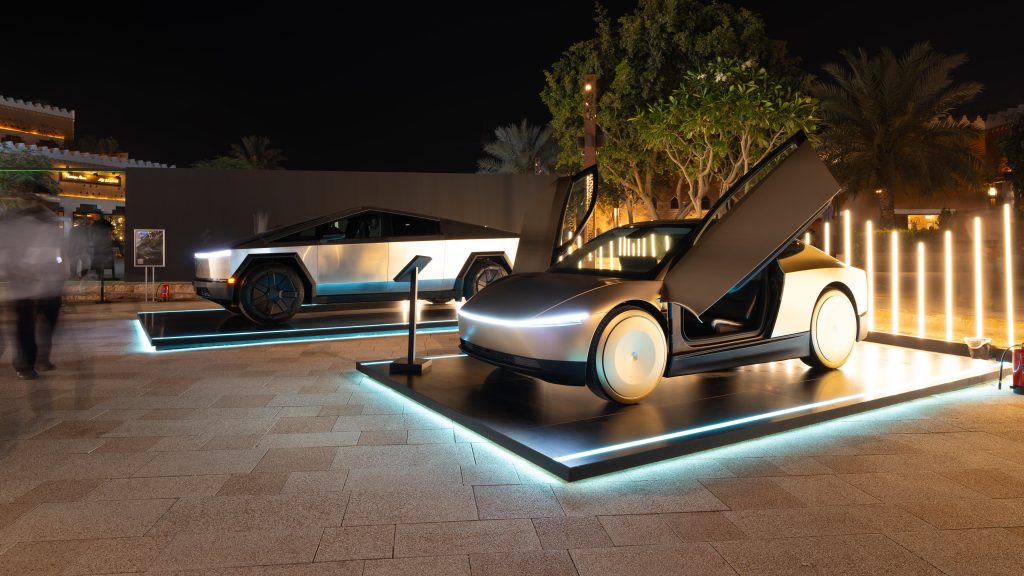
Credit: Tesla Europe & Middle East | X
Currently, even autonomous vehicles that operate for companies like Tesla and Waymo are required to have steering wheels and pedals. From a regulatory perspective, this could halt the plans Tesla has for Cybercab.
Denholm said in an interview with Bloomberg:
“If we have to have a steering wheel, it can have a steering wheel and pedals.”
Interestingly, Musk and Tesla have not veered away from the idea that the vehicle will be without these operational must-haves.
Since the vehicle was revealed last October at the We, Robot event in Los Angeles, Tesla has maintained that the car would be built without a steering wheel or pedals, and would equip two seats, which is what is statistically most popular in ride-sharing, as the vast majority of rides have only one or two passengers.
Musk doubled down on the plans for Cybercab as recently as last week, when he said:
“That’s really a vehicle that’s optimized for full autonomy. It, in fact, does not have a steering wheel or pedals and is really an enduring optimization on minimizing cost per mile for fully considered cost per mile of operation. For our other vehicles, they still have a little bit of the horse carriage thing going on where, obviously, if you’ve got steering wheels and pedals and you’re designing a car that people might want to go very direct past acceleration and tight cornering, like high-performance cars, then you’re going to design a different car than one that is optimized for a comfortable ride and doesn’t expect to go past sort of 85 or 90 miles an hour.”
Cybercab is fully conceptualized as a vehicle that has zero need for pedals or a steering wheel because it is aimed toward being fully reliant on a Level 5 autonomous platform.
Tesla is ramping its hiring for Cybercab vehicle manufacturing roles
Regulators could get in the way of this, however, and although the car could drive itself and be a great solution for ride-hailing, it might need to have these controls to hit the road in the future.
News
SpaceX opens up free Starlink service for those impacted by Hurricane Melissa
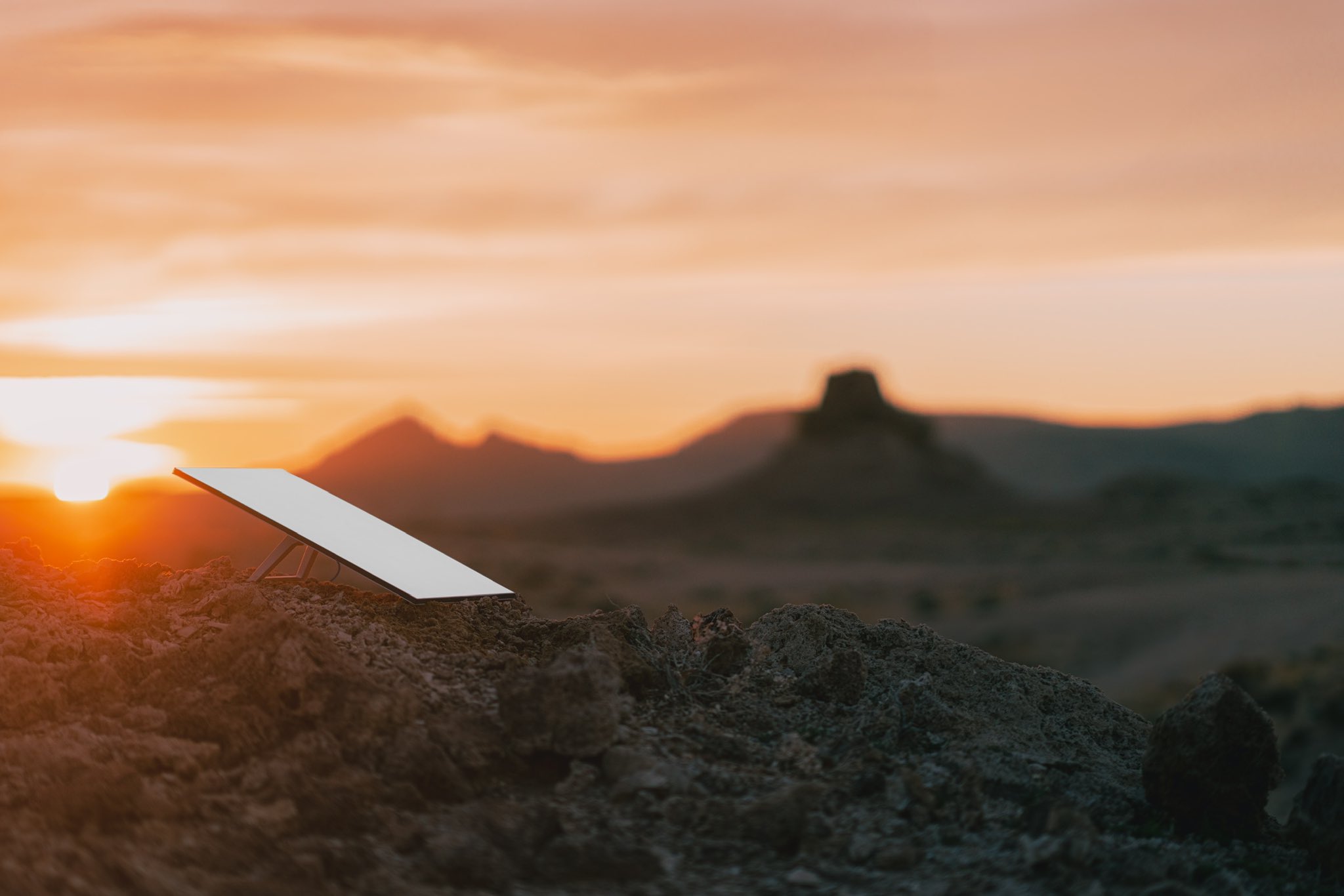
SpaceX is opening up its internet service, Starlink, to those impacted by Hurricane Melissa, as it made landfall in Jamaica and the Bahamas as a Category 5 storm.
Hurricane Melissa is expected to reach wind speeds of over 165 MPH over the next few days as it extends out into the Atlantic Ocean by Thursday and Friday.
Satellite imagery shows Hurricane #Melissa‘s growth from its formation on October 21 to a Category 5 hurricane through October 27, 2025. #HurricaneMelissa pic.twitter.com/goR3Hbgb9c
— The Weather Network (@weathernetwork) October 27, 2025
Citizens in Jamaica and the Bahamas have been preparing for the storm for the past week, getting necessary goods together and preparing for the massive storm to arrive. It finally did yesterday, and the first images and video of the storm are showing that it could destroy many parts of both countries.
Starlink is now being opened up for free until the end of November for those impacted by the storm in Jamaica and the Bahamas, SpaceX announced today:
For those impacted by Hurricane Melissa in Jamaica and the Bahamas, Starlink service is now free through the end of November to help with response and recovery efforts → https://t.co/fUko3xSviJ
— Starlink (@Starlink) October 28, 2025
It is a move similar to the one the company made last year as Hurricane Helene made its way through the United States, destroying homes and property across the East Coast. SpaceX offered free service for those impacted by the destruction caused by the storm.
The free Starlink service was available until the end of 2024.
Elon Musk’s companies have also made similar moves to help out those who are impacted by natural disasters. Tesla has offered Free Supercharging in the past, most notably during the California wildfires.
Tesla and SpaceX’s LA fire relief efforts: Cybertrucks, free Starlink and more
One major advantage of Starlink is that it is available for use in situations like this one, where power might be required to operate things like a modem and router.
Internet access is a crucial part of survival in these situations, especially as it can be the last leg some stand on to get in touch with emergency services or loved ones.
Elon Musk
Tesla board chair reiterates widely unmentioned point of Musk comp plan

Tesla Board Chair Robyn Denholm appeared on Bloomberg TV this morning to discuss the current status of CEO Elon Musk’s compensation plan, and used the opportunity to reiterate a widely unmentioned key point of the entire package.
Critics of the proposed pay package, which would pay Musk $1 trillion if he completes every tranche, routinely cite the sheer size of the payday.
Of course, many skeptics leave out the fact that he would only get that money if he were able to generate eight times the value the company currently has.
Tesla gains massive vote of confidence on compensation plan for Elon Musk
For Musk, it might have a little bit to do with money, but that is likely a very small percentage point of why the compensation package is being offered to him. He has reiterated that it is more about voting control and overall influence, especially as Tesla dives into robotics.
He said during the Q3 Earnings Call:
“My fundamental concern with regard to how much voting control I have at Tesla is if I go ahead and build this enormous robot army, can I just be ousted at some point in the future? That’s my biggest concern. That is really the only thing I’m trying to address with this. It’s called compensation, but it’s not like I’m going to go spend the money. It’s just, if we build this robot army, do I have at least a strong influence over that robot army, not current control, but a strong influence? That’s what it comes down to in a nutshell. I don’t feel comfortable wielding that robot army if I don’t have at least a strong influence.”
Tesla shares the idea that Musk is a crucial part of the company, and without him being awarded the voting control he feels he deserves, he could leave the company altogether.
The company is very obviously feeling the importance of the upcoming vote, as it has advertised and pushed heavily for the comp plan to be approved, mostly to retain Musk.
Tesla Board Chair Robyn Denholm said today to Bloomberg TV that it is crucial shareholders understand it is not about Musk’s potential wealth, but more about his influence on company decisions:
“So firstly, it is a performance package, so he gets nothing if he doesn’t perform against the pretty audacious milestones that are part of the performance criteria that’s been outlined by the board in the performance package. So, I think rather than compensation, it’s actually about the performance and the goals that we have for the company as we move forward. And so, for me, it really is about making sure that investors understand that they actually get paid if he hits the milestones before he will…Elon’s been very public, including on last week’s earnings call, about the fact that it’s around the voting influence that he could have in future shareholder meetings as opposed to the economic interests.”
Musk is not an incredibly flashy person. He does not have crazy cars or a massive house to go back to. He spends a lot of his time working and sometimes even sleeps at his office inside the factory.
He recently said he “only has what is needed” because “material possessions were making him weak.”
Material possessions were making me weak, so now I have only what is needed
— Elon Musk (@elonmusk) October 20, 2025
-
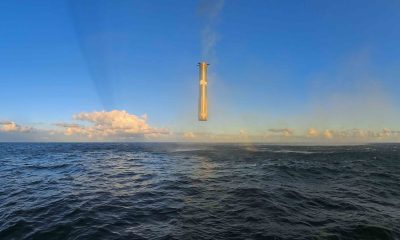
 Elon Musk2 weeks ago
Elon Musk2 weeks agoSpaceX posts Starship booster feat that’s so nutty, it doesn’t even look real
-

 Elon Musk2 weeks ago
Elon Musk2 weeks agoTesla Full Self-Driving gets an offer to be insured for ‘almost free’
-
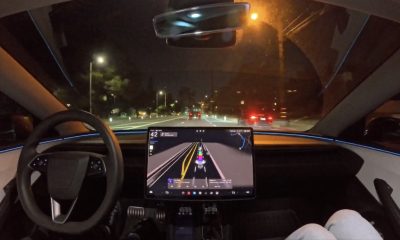
 News1 week ago
News1 week agoElon Musk confirms Tesla FSD V14.2 will see widespread rollout
-
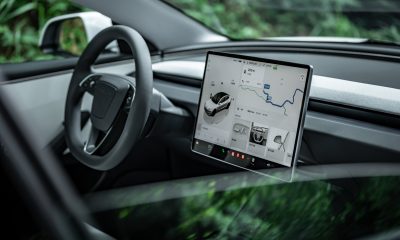
 News2 weeks ago
News2 weeks agoTesla is adding an interesting feature to its centerscreen in a coming update
-
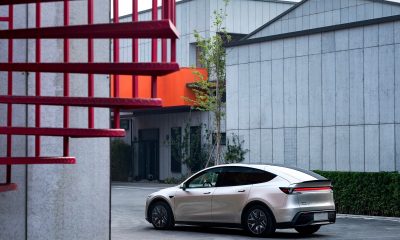
 News2 weeks ago
News2 weeks agoTesla launches new interior option for Model Y
-
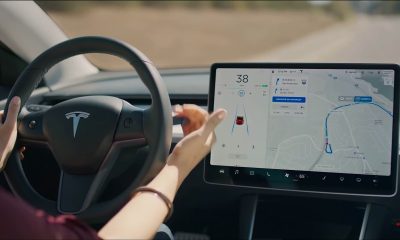
 News2 weeks ago
News2 weeks agoTesla widens rollout of new Full Self-Driving suite to more owners
-
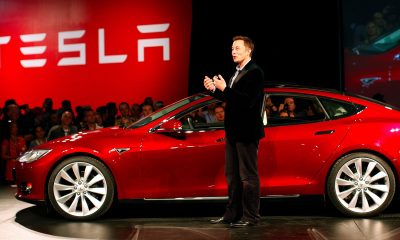
 Elon Musk2 weeks ago
Elon Musk2 weeks agoTesla CEO Elon Musk’s $1 trillion pay package hits first adversity from proxy firm
-
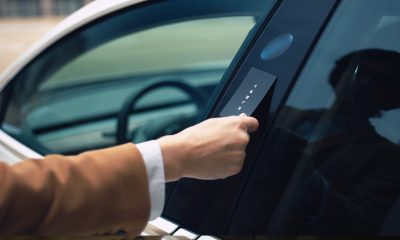
 News1 week ago
News1 week agoTesla might be doing away with a long-included feature with its vehicles


